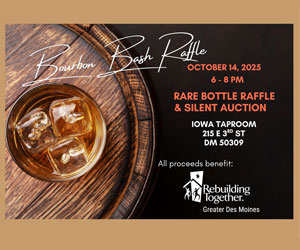Recession will hit shopping malls har

.floatimg-left-hort { float:left; } .floatimg-left-caption-hort { float:left; margin-bottom:10px; width:300px; margin-right:10px; clear:left;} .floatimg-left-vert { float:left; margin-top:10px; margin-right:15px; width:200px;} .floatimg-left-caption-vert { float:left; margin-right:10px; margin-bottom:10px; font-size: 12px; width:200px;} .floatimg-right-hort { float:right; margin-top:10px; margin-left:10px; margin-bottom:10px; width: 300px;} .floatimg-right-caption-hort { float:left; margin-right:10px; margin-bottom:10px; width: 300px; font-size: 12px; } .floatimg-right-vert { float:right; margin-top:10px; margin-left:10px; margin-bottom:10px; width: 200px;} .floatimg-right-caption-vert { float:left; margin-right:10px; margin-bottom:10px; width: 200px; font-size: 12px; } .floatimgright-sidebar { float:right; margin-top:10px; margin-left:10px; margin-bottom:10px; width: 200px; border-top-style: double; border-top-color: black; border-bottom-style: double; border-bottom-color: black;} .floatimgright-sidebar p { line-height: 115%; text-indent: 10px; } .floatimgright-sidebar h4 { font-variant:small-caps; } .pullquote { float:right; margin-top:10px; margin-left:10px; margin-bottom:10px; width: 150px; background: url(http://www.dmbusinessdaily.com/DAILY/editorial/extras/closequote.gif) no-repeat bottom right !important ; line-height: 150%; font-size: 125%; border-top: 1px solid; border-bottom: 1px solid;} .floatvidleft { float:left; margin-bottom:10px; width:325px; margin-right:10px; clear:left;} .floatvidright { float:right; margin-bottom:10px; width:325px; margin-right:10px; clear:left;}
I grew up in a shopping mall where my parents owned a store. In the morning before the mall opened, store owners and managers often gathered for coffee to discuss business. This was my first introduction to the word “recession.”
It seems funny that economists can’t seem to agree on what constitutes a recession or whether the economy is in one, yet a group of retailers can tell you exactly when it started with no disagreement. Shortly after hearing “recession” for the first time, I took note of stores closing, clerks and other staff disappearing, and less activity in my parents’ store. Eventually the mall rebounded, but that was in the early 1980s, when the shopping mall was still in favor.
This is why it is with sadness that I predict we will have to give the old shopping mall its last rites.
Iowa has mimicked the national trend in retail sales. When adjusted for inflation, sales have actually declined in recent years. Traditional shopping malls have been in decline, struggling to attract new stores and witnessing dropping sales in existing stores. Now the stampede is on.
The Sharper Image is closing nearly half of its stores nationwide, Wilsons Leather has announced it will close most of its mall stores, and familiar retailers like Ann Taylor and the Movie Gallery are following suit. Malls will lose many mainstays and face the task of trying to entice new tenants as discretionary spending declines.
These pressures are too great for the traditional shopping mall to survive. We are already seeing retailers such as Wal-Mart benefiting from the economic downturn as customers substitute and trade down – spending more dollars at discount retailers and fewer at competing stores.
But the so-called lifestyle center – like the Jordan Creek Town Center – may survive. Although inflation-adjusted retail sales declined almost 3 percent in Iowa in recent years, Jordan Creek’s home of Dallas County has seen a nearly 225 percent increase in sales. Jordan Creek has a more upscale retail product mix than, say, Merle Hay Mall, and that will be why it suffers less in the recession.
For many of the retailers at Merle Hay Mall, discounters such as Wal-Mart and Target provide closer substitutes for their goods, and consumers will adjust where they spend their retail dollars. Because the discount retailers are not substitutes for higher-end retailers like those at Jordan Creek, substitution will likely occur within the Town Center’s walls.
Jordan Creek stores don’t have to rely on the average shopper’s disposable income, and it will be the average shopper who makes the most trade-offs. Energy costs and the overall increase in prices will hit the average-income earners hardest, forcing them to make trade-offs that higher-income consumers may not have to make.
There’s a psychological factor, too. The overall appeal of the lifestyle center is in the bright airy spaces, attractive storefronts and upbeat modern feel; traditional malls tend to be dark and more confining.
One thing we can count on in a recession is that there will be winners and losers. Unfortunately, the malls of my childhood will be the latter.
Meghan O’Brien is an economist and program specialist with Iowa State University Extension.







